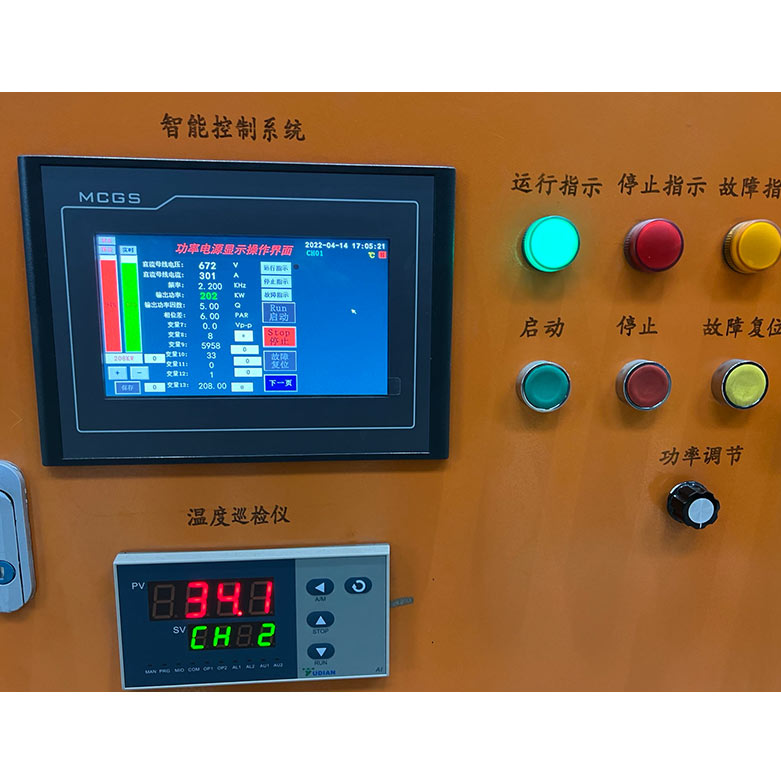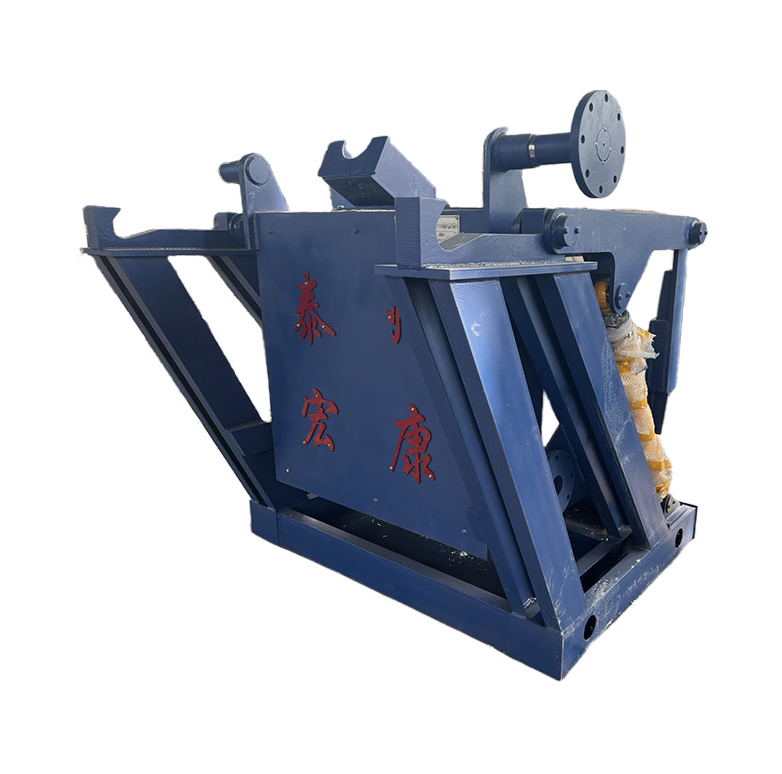Guide to Induction Furnace for Steel Melting: How They Work and Why They Matter
Why Are Induction Furnaces Crucial to the Steel Industry?
The significance of steel production has been deeply intertwined with industrial progress for centuries, positioning it as an indispensable material for a multitude of sectors—ranging from construction to automotive manufacturing and beyond. However, the advanced technology that underpins the production of this resilient material often remains underappreciated. What exactly enables us to convert raw materials into refined steel? The answer lies in the Induction Furnace for Steel Melting—a cutting-edge innovation that is redefining the way steel is produced today.
Within the realm of steel melting operations, induction furnaces have established themselves as the cornerstone of modern production. Induction furnaces offer many advantages over traditional methods such as electric arc furnaces or blast furnaces. These include unrivalled energy efficiency, precision in temperature regulation and a cleaner, more environmentally friendly melting process. But what makes these furnaces so efficient? And why are they increasingly becoming the preferred choice for steelmaking?
How Do Induction Furnaces Operate? The Intricacies Behind the Process
Induction furnaces use the principle of electromagnetic induction, which is the mechanism by which electrical energy is converted into heat energy via alternating current (AC). Essentially, when an AC current passes through a coil, an electromagnetic field is created. This induces an electric current in the metal within the furnace. These currents then produce heat, elevating the temperature of the metal and ultimately melting it. This efficient process not only ensures fast melting but also allows precise temperature control. This is critical to maintaining the consistency and quality of the finished steel.
The operational phases within an Induction Furnace for Steel Melting can be outlined as follows:
Furnace Charging: At the onset, the furnace is loaded with raw materials—be it steel scrap, direct reduced iron (DRI), or other metallic alloys. The selection of these input materials directly influences the composition of the final steel product, making this an essential step in the production cycle.
Melting Phase: The electromagnetic field generated by the coil induces eddy currents in the metallic charge, causing it to heat up and eventually melt. During this phase, precise temperature control is critical to achieving the desired melting point and ensuring homogeneous molten steel.
Alloying and Refining: After reaching the molten state, alloying elements are introduced, and impurities are removed. This step is crucial for producing steel with specific properties, such as enhanced strength or corrosion resistance, aligning with the intended application of the product.
Pouring and Casting: Once the molten steel achieves the desired chemical composition, it is poured into molds for casting or transferred to a continuous casting machine. This stage requires careful handling to avoid contamination and to ensure uniform solidification of the steel.
The efficiency and controllability of this process make induction furnaces a cost-effective and environmentally friendly option for steel production. They minimize waste and energy usage, contributing significantly to sustainability in the industry.
Optimizing Steel Melting Processes: The Science Behind Induction Furnaces
The design of induction furnaces is inherently geared towards optimizing the steel melting process by offering precise control over various operational parameters. A deeper understanding of the scientific principles involved can provide insights into how these furnaces achieve such high levels of efficiency and product quality.
Electromagnetic Field Dynamics and Heating Efficiency: The frequency of the alternating current on the induction coil is a key factor affecting heating efficiency. High-frequency currents are better suited to melting small quantities of metal because they generate heat faster. Low-frequency currents are better suited to processing large quantities of metal. Fine-tuning this frequency can maximize energy transfer, ensuring that the furnace operates at optimal efficiency.
Temperature Monitoring and Control: Stability in temperature throughout the melting process is paramount to achieving consistent steel properties. State-of-the-art induction furnaces are equipped with sophisticated temperature sensors and control systems, enabling real-time monitoring and adjustments. This capability is particularly beneficial when producing specialty steels, where even minute fluctuations in temperature can alter the physical properties of the final product.
Precise Control of Alloying and Chemical Composition: The versatility of induction furnaces allows for the addition and regulation of various alloying elements in the molten steel. This feature is crucial for tailoring the chemical composition of steel to meet specific mechanical and chemical requirements, such as improved hardness, ductility, or resistance to environmental degradation.
With a firm grasp of these scientific aspects, operators can fine-tune their induction furnace operations, yielding high-quality steel while minimizing energy consumption and material waste.
Choosing the Optimal Induction Furnace for Steel Melting: Factors to Consider
Selecting the most suitable induction furnace for steel melting involves a comprehensive evaluation of several factors, including the volume of production, energy efficiency, and the specific type of steel being manufactured. The following are common types of induction furnaces, each tailored to meet distinct production requirements:
Coreless Induction Furnaces: Coreless induction furnaces are the most widely used for steel melting due to their adaptability. They consist of a crucible lined with refractory material, encircled by an induction coil. This design enables them to handle a diverse range of steel grades, making them ideal for foundries and small to medium-sized steel producers.
Channel Induction Furnaces: Unlike coreless induction furnaces, tunnel induction furnaces are primarily used to hold and pour molten metal. Instead of melting directly.They are particularly useful in continuous casting operations, where maintaining a steady temperature over extended periods is necessary.
Fixed Point Casting Melting Furnaces: Fixed-point casting furnaces are designed to melt and cast metal at a constant temperature. Usually corresponds to the eutectic point of the alloy.This ensures exceptional precision and reproducibility during the melting process. Reputable suppliers such as Taizhou Hongkang Electric Co., Ltd. specialize in the production of these advanced furnaces. These furnaces are highly regarded for their ability to maintain tight temperature control and stability.
Selecting the appropriate furnace type involves a nuanced consideration of production goals, budgetary constraints, and desired steel properties. Consulting with experienced suppliers such as Taizhou Hongkang Electric Co., Ltd. can provide valuable guidance in making an informed choice.
Sustainability in Steel Production: How Induction Furnaces Contribute to a Greener Future
Historically, the steel industry has been synonymous with high energy consumption and significant carbon emissions. However, the growing adoption of induction furnaces is transforming the industry by offering a more sustainable and eco-friendly approach.
Reduced Energy Consumption:Induction furnaces operate very efficiently, converting nearly all of the electrical energy supplied into melting heat. This reduces overall energy requirements. This efficiency makes induction furnaces a more sustainable alternative compared to traditional methods like electric arc or blast furnaces.
Lower Emissions: By using electricity as their primary energy source, induction furnaces eliminate the need for fossil fuels such as coke and coal. This results in a significant reduction in emissions of greenhouse gases and other air pollutants.
Minimized Waste: The precision of temperature control and alloys ensures that the induction furnace uses only the necessary amount of material. This reduces waste and promotes better resource utilization.
These environmental benefits are driving the adoption of induction furnaces in the steel industry. Not only do they enable companies to comply with strict environmental regulations. It also reduces operating costs and improves product quality.
Emerging Trends and Innovations in the Induction Furnace Industry
The induction furnace industry is undergoing rapid evolution, with new technologies and innovations enhancing furnace performance and operational efficiency. Some of the notable trends include:
Automation and Digitalization: The integration of automated controls and digital monitoring systems is making induction furnaces more user-friendly and efficient. Real-time data analytics facilitate predictive maintenance, reducing downtime and increasing overall productivity.
Energy Recovery Systems: Modern induction stoves are equipped with energy recovery systems. Waste heat can be captured and reused, further increasing its energy efficiency.
Advanced Refractory Materials: Development of new refractory materials with stronger thermal shock and wear resistance. Extends the service life of the induction furnace. This has reduced maintenance requirements and saved costs.
These advancements make future induction furnaces not only more efficient. And it lays the foundation for being more sustainable and cost-effective.
Trusting in Fixed Point Casting Melting Furnaces
The Pinpoint Foundry Melting Furnace is renowned for its unrivalled precision, reliability and adaptability in metal melting and casting. It is especially valuable in applications where maintaining precise temperature control is critical.Taizhou Hongkang Electric Co., Ltd. offers advanced fixed point casting melting furnaces that boast sophisticated temperature control mechanisms and comprehensive safety features, ensuring consistent and high-quality steel production.
Conclusion
Whether your goal is to enhance your current steelmaking operations or explore new possibilities. Selecting the right induction furnace for steelmaking, whether a standard model or a specialized model such as a fixed-point casting and melting furnace, plays a key role in achieving the best results.


